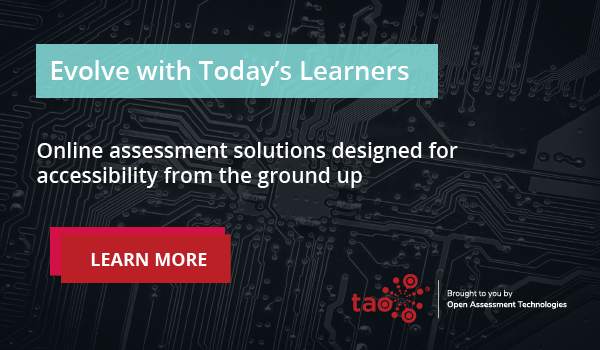It’s taken longer than many of us hoped, but online assessment platforms are finally taking accessibility seriously, and many platforms are openly boasting about their accessibility compliance and features. It’s tempting to celebrate and pat ourselves on the back. Admittedly, I have indulged in a bit of jubilation myself. However, assessment programs need to dig a little deeper and think through the whole chain of access to all the aspects of taking a test.
Access for Test Takers
Test takers need access to the whole testing program workflow, from general information about the test through reporting. That workflow includes:
- Information about the test itself
- Test registration
- Accommodation requests
- Login screens
- Sample tests
- Test results
All communication about any aspect of the testing process needs to be accessible, including PDFs, forms, and charts.
By providing access to the full assessment process, we can give test takers full agency to demonstrate their abilities and the impact of that performance. Without access to these ancillary materials, we put up additional roadblocks for people, and consign them to feeling needy.
Access for Agents
Family members or other agents (aides, counselors, teachers, administrators) may have accessibility needs that if not provided, would limit their ability to participate in the education of test takers.
Indeed, because family members and agents tend to be older, they’re even more likely to have accessibility requirements. Many programs even require the approval by a guardian. We’re all people, with our own special ways of perceiving and acting in the world, and our assessment programs need to be more human-centric – allowing for the variation of people.
Access for Test Makers
Finally, assessment programs should strive to provide access to assessment authoring environments. A diverse workforce should include people with different abilities. In fact, people with different access needs are critical to evaluating the appropriateness of alternatives provided to candidates or restrictions placed on candidates.
I think for the assessment industry, this will be the final difficult push. Authoring environments are significantly more complex than test delivery platforms, with intricate content management systems and elaborate workflows. Many of these systems are decades old by now, and updating them is no small task. But that doesn’t make it impossible, or an excuse for complacency. We must rise to this important challenge.
Summing Up
Accessibility for tests isn’t only about the test itself. If we can meet the challenge of full access for test takers and include assessment authors with access needs, imagine how much more accessible our assessments would be, and how much better we would be measuring what people know and can do.

